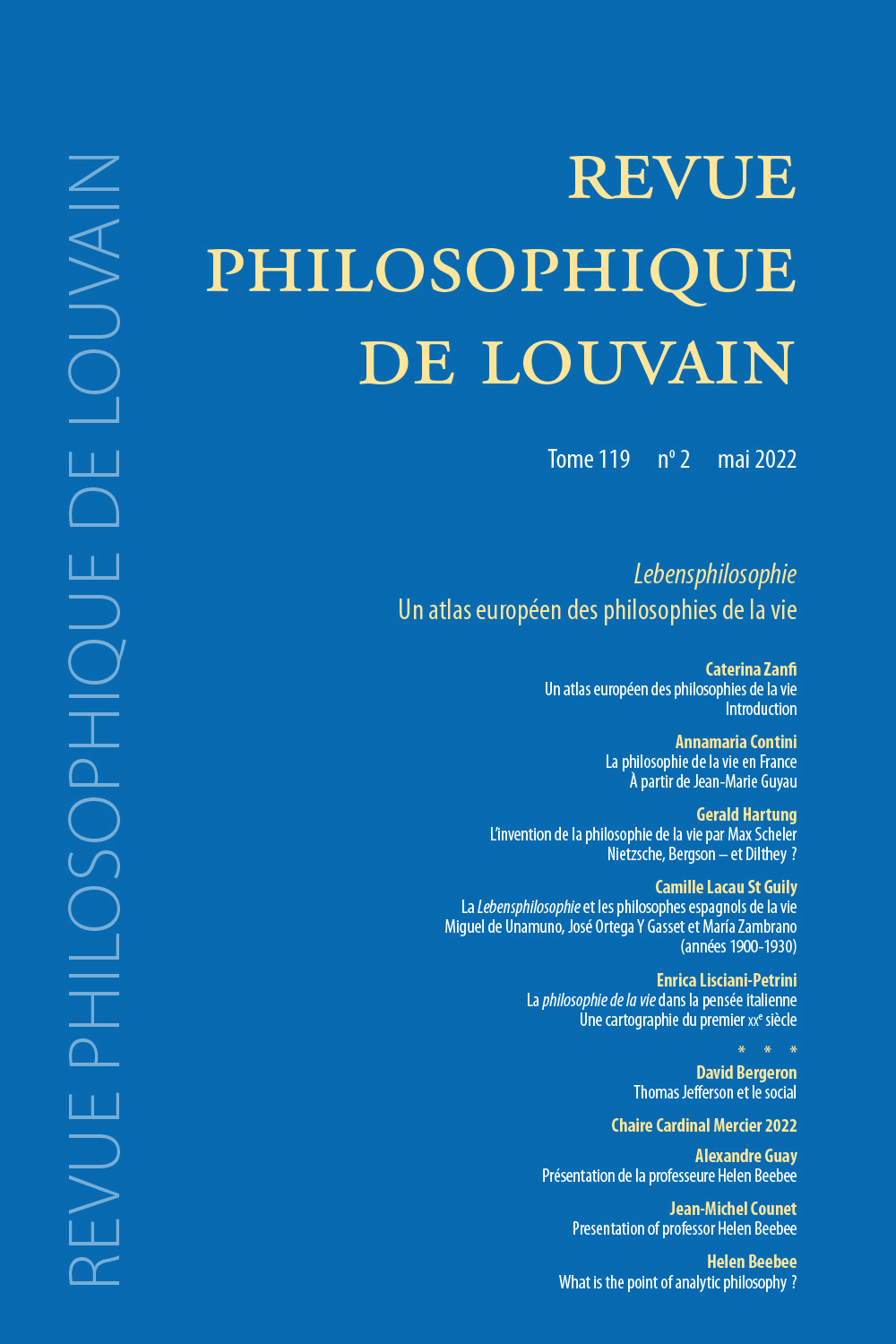 previous article in this issue previous article in this issue | next article in this issue  |

Preview first page |
Document Details : Title: Le concept leibnizien d'entéléchie et sa source aristotélicienne Author(s): LATOUR, Annick Journal: Revue Philosophique de Louvain Volume: 100 Issue: 4 Date: Novembre 2002 Pages: 698-722 DOI: 10.2143/RPL.100.4.704 Abstract : Le terme entéléchie, créé par Aristote pour désigner l'acte par rapport à la puissance, est repris par Leibniz à partir de 1691, autour de l'avènement de la Dynamique, pour s'appliquer à la substance. Chez Aristote, par distinction avec l'énergie, l'entéléchie se réfère à une actualité statique. Leibniz l'intègre en se référant à l'entéléchie première, à l'âme et à la forme, pour dénoter le fondement substantiel animé du monde. Mais cette seule association approximative dénature Aristote et tronque les raisons de l'emprunt. Leibniz se fonde aussi sur la perfection, et peut-être aussi sur la finalité de l'entéléchie: ainsi s'expliquent la réalité et la réalisation de l'acte substantiel. De plus, Leibniz retient une part de l'acte véhiculé par le concept, mais en gomme consciemment la polarisation (puissance / accomplissement). Deux emplois leibniziens du concept d'entéléchie se découpent ainsi: l'un, large, désigne l'ensemble de la substance animée; l'autre, plus technique, ne recoupe plus que la force active primitive. The term entelecheia, created by Aristotle to refer to act as compared with potentiality, is taken over by Leibniz from 1691 onwards, with the arrival of Dynamics, and applied to substance. Aristotle uses entelecheia to refer to a static reality as contrasted with energeia. Leibniz incorporates it, referring to first entelechy, to soul and to form, to denote the animate substantial foundation of the world. But this mere approximate association misrepresents Aristotle and cuts short the reasons for the loan. Leibniz bases himself also on the perfection, and perhaps also on the finality of the entelechy: this is the explanation of the reality and the realisation of the substantial act. Furthermore, Leibniz retains a part of the act represented by the concept, but consciously effaces its polarisation (potentiality/accomplishment). Thus two Leibnizian uses of the concept of entelechy stand out: the one, broad, refers to all of animate substance; the other, more technical, corresponds only to primitive active force. (Transl. by J. Dudley). |
|


